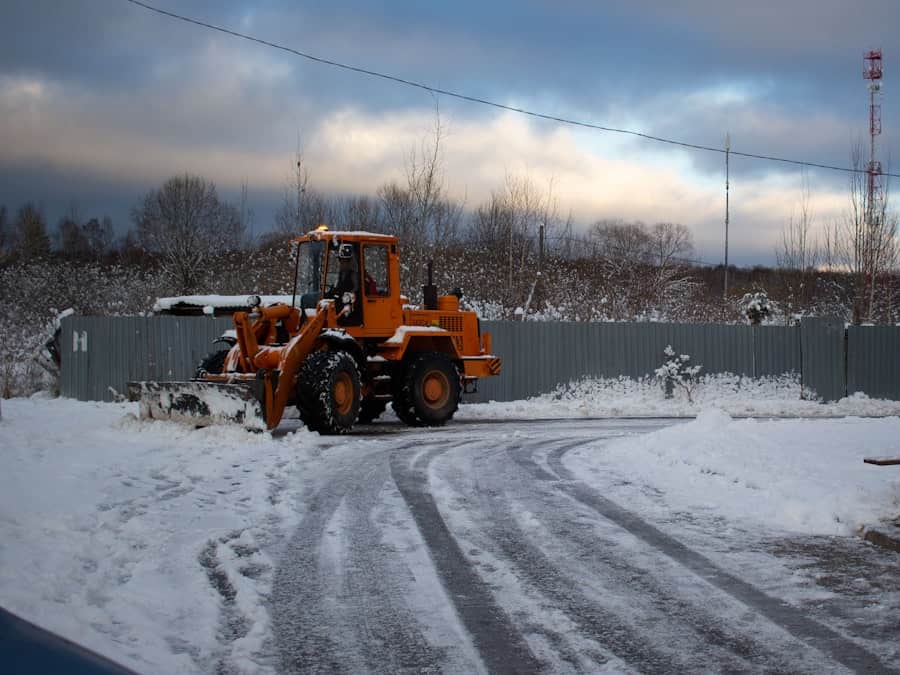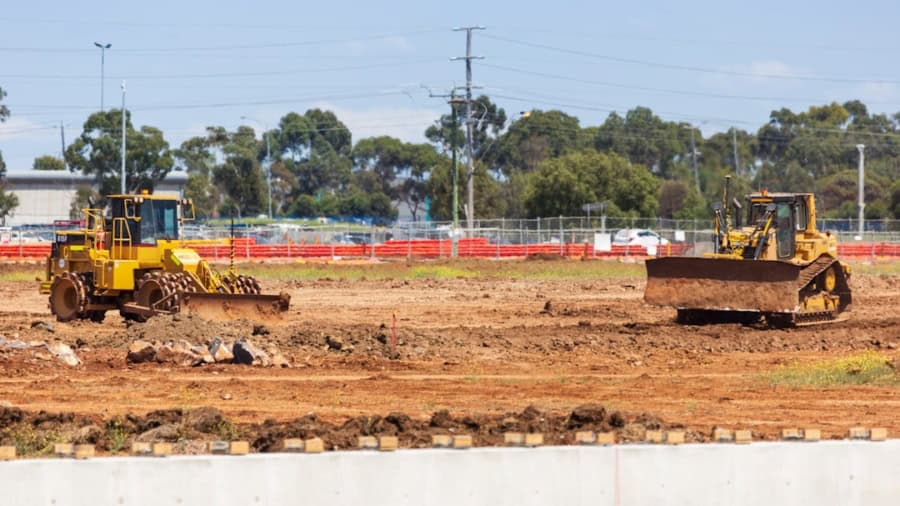Precision agriculture represents a transformative approach to farming that leverages technology to enhance productivity, efficiency, and sustainability. At its core, precision agriculture equipment encompasses a range of tools and technologies designed to collect, analyze, and act upon data related to agricultural practices. This includes everything from GPS-guided tractors and drones to soil sensors and automated irrigation systems.
The goal is to optimize field-level management regarding crop farming, ensuring that resources such as water, fertilizers, and pesticides are used judiciously and effectively. The advent of precision agriculture has been driven by the need for increased food production in the face of a growing global population, alongside the challenges posed by climate change and resource scarcity. By utilizing advanced technologies, farmers can make informed decisions based on real-time data, leading to improved crop yields and reduced environmental impact.
As the agricultural sector continues to evolve, the integration of robotics into precision agriculture equipment is becoming increasingly significant, offering new possibilities for enhancing operational efficiency and sustainability.
Key Takeaways
- Precision agriculture equipment utilizes advanced technology to optimize farming practices and increase efficiency.
- Robotics in precision agriculture have significantly impacted the industry by automating tasks and improving accuracy.
- The advantages of using robotics in agriculture equipment include increased productivity, reduced labor costs, and precise application of inputs.
- Types of robotics used in precision agriculture equipment include drones, autonomous tractors, robotic harvesters, and automated irrigation systems.
- Challenges and limitations of robotics in agriculture include high initial investment, limited adaptability to diverse environments, and potential job displacement.
- Future trends in robotics for precision agriculture equipment include the development of more advanced autonomous systems and integration of artificial intelligence.
- Case studies of successful implementation of robotics in agriculture showcase improved crop yields, cost savings, and reduced environmental impact.
- In conclusion, the future of robotics in precision agriculture equipment is promising, with continued advancements expected to revolutionize the industry.
The Impact of Robotics in Precision Agriculture
Robotics has emerged as a pivotal component of precision agriculture, fundamentally altering how farming operations are conducted. The integration of robotic systems into agricultural practices allows for the automation of various tasks that were traditionally labor-intensive. For instance, autonomous tractors equipped with GPS technology can perform plowing, planting, and harvesting with minimal human intervention.
This not only reduces labor costs but also enhances precision in operations, leading to better crop management. Moreover, robotics in precision agriculture extends beyond just machinery. Drones equipped with advanced imaging technology can survey vast tracts of land quickly, providing farmers with critical insights into crop health and soil conditions.
These aerial robots can capture high-resolution images that reveal variations in plant health, enabling targeted interventions that can significantly improve yield outcomes. The ability to monitor crops from above allows for timely decision-making, which is crucial in addressing issues such as pest infestations or nutrient deficiencies before they escalate.
Advantages of Using Robotics in Agriculture Equipment

The advantages of incorporating robotics into agricultural equipment are manifold. One of the most significant benefits is the enhancement of operational efficiency. Robots can work around the clock without the need for breaks or rest, allowing for continuous operation during critical periods such as planting or harvesting seasons.
This capability ensures that tasks are completed in a timely manner, which is essential for maximizing crop yields. Additionally, robotics contributes to precision in farming practices. Automated systems can apply fertilizers and pesticides with pinpoint accuracy, reducing waste and minimizing environmental impact.
For example, variable rate technology (VRT) allows for the application of inputs based on specific field conditions rather than a one-size-fits-all approach. This targeted application not only conserves resources but also promotes healthier soil and crops by preventing over-application of chemicals. Another advantage is the reduction of labor shortages that many agricultural sectors face today.
By automating repetitive tasks such as weeding or harvesting, farmers can alleviate the pressure of labor shortages while maintaining productivity levels. Furthermore, robots can operate in conditions that may be challenging for human workers, such as extreme weather or hazardous environments.
Types of Robotics Used in Precision Agriculture Equipment
The landscape of robotics in precision agriculture is diverse, encompassing various types of machines designed for specific tasks. Autonomous tractors are among the most well-known examples; these vehicles utilize GPS and advanced sensors to navigate fields independently. They can perform a range of functions from tilling to planting and even harvesting crops without direct human control.
Drones represent another significant category of agricultural robotics. These aerial vehicles are equipped with cameras and sensors that capture data on crop health, soil conditions, and moisture levels. Farmers can use this information to make informed decisions about irrigation and fertilization schedules.
Drones can also be employed for crop spraying, allowing for precise application of pesticides or fertilizers over large areas while minimizing chemical drift. Robotic harvesters are also gaining traction in the industry. These machines are designed to pick fruits and vegetables with care, reducing damage to crops while increasing harvesting efficiency.
For instance, companies have developed robotic systems capable of identifying ripe fruits using machine learning algorithms and then delicately harvesting them without bruising or damaging the produce.
Challenges and Limitations of Robotics in Agriculture
Despite the numerous advantages that robotics brings to precision agriculture, several challenges and limitations must be addressed for widespread adoption.
Many small to medium-sized farms may find it difficult to justify the costs associated with purchasing and maintaining sophisticated equipment.
This financial barrier can limit access to technology that could otherwise enhance productivity. Another challenge lies in the integration of robotics with existing agricultural practices. Farmers often rely on traditional methods that have been passed down through generations; transitioning to automated systems requires not only financial investment but also a shift in mindset and operational practices.
Training personnel to operate and maintain robotic equipment is essential but can be time-consuming and costly. Moreover, there are concerns regarding data security and privacy as agricultural robotics increasingly rely on data collection and analysis. The use of sensors and drones generates vast amounts of data that must be managed effectively.
Farmers need assurance that their data will be protected from unauthorized access or misuse, which necessitates robust cybersecurity measures.
Future Trends in Robotics for Precision Agriculture Equipment

The future of robotics in precision agriculture is poised for significant advancements driven by ongoing technological innovations. One emerging trend is the development of more sophisticated artificial intelligence (AI) algorithms that enhance the capabilities of robotic systems. These AI-driven robots will be able to learn from their environment and adapt their operations accordingly, leading to even greater efficiency and precision in farming practices.
Another trend is the increasing miniaturization of robotic technologies. Smaller robots designed for specific tasks—such as weeding or monitoring soil health—are becoming more prevalent. These compact machines can operate in tighter spaces and are often more affordable than larger counterparts, making them accessible to a broader range of farmers.
Collaboration between different technologies is also expected to grow. For instance, integrating robotics with Internet of Things (IoT) devices will enable seamless communication between various systems on a farm. This interconnectedness will allow for real-time monitoring and adjustments based on data collected from multiple sources, leading to more informed decision-making processes.
Case Studies of Successful Implementation of Robotics in Agriculture
Several case studies illustrate the successful implementation of robotics in precision agriculture, showcasing how these technologies can transform farming practices. One notable example is the use of autonomous tractors by large-scale grain producers in the Midwest United States. These farmers have reported significant increases in efficiency due to the ability of autonomous tractors to operate continuously without human intervention.
By utilizing GPS-guided systems, they have optimized planting patterns and reduced input costs while maintaining high levels of productivity. Another compelling case study involves a vineyard in California that adopted drone technology for crop monitoring and management. By employing drones equipped with multispectral cameras, vineyard managers were able to assess vine health more accurately than traditional methods allowed.
The data collected enabled them to identify areas requiring additional irrigation or pest control measures promptly. As a result, they achieved higher grape quality and increased overall yield while minimizing resource use. In Europe, a cooperative of small-scale farmers has successfully integrated robotic weeding systems into their operations.
These robots utilize advanced vision systems to distinguish between crops and weeds, allowing them to remove unwanted plants without harming the desired crops. This approach has not only reduced labor costs but also decreased reliance on chemical herbicides, aligning with sustainable farming practices.
Conclusion and the Future of Robotics in Precision Agriculture Equipment
As precision agriculture continues to evolve, the role of robotics will undoubtedly expand further, shaping the future landscape of farming practices worldwide. The integration of advanced technologies promises not only enhanced productivity but also a more sustainable approach to agriculture that addresses pressing global challenges such as food security and environmental conservation. The ongoing development of robotics will likely lead to even more innovative solutions tailored to meet the specific needs of farmers across various regions and scales of operation.
As barriers related to cost and training are addressed through collaborative efforts between technology providers and agricultural stakeholders, we can expect a broader adoption of robotic systems in farming. Ultimately, the future of robotics in precision agriculture equipment holds great promise for transforming how food is produced while ensuring that agricultural practices remain sustainable and efficient in an ever-changing world.
In a recent article on enicomp.com, the potential of sustainable energy is explored through the story of one founder’s journey. This article sheds light on the importance of harnessing renewable energy sources in order to combat climate change and create a more sustainable future. Just like the advancements in precision agriculture equipment discussed in “The Role of Robotics in Precision Agriculture Equipment,” the development of sustainable energy technologies is crucial for improving efficiency and reducing environmental impact in various industries. Both articles highlight the significant role that emerging technologies play in shaping the future of agriculture and energy production.
FAQs
What is precision agriculture equipment?
Precision agriculture equipment refers to technology and machinery used in farming to optimize the use of resources such as water, fertilizer, and pesticides. This equipment includes GPS-guided tractors, drones, sensors, and robotics.
What is the role of robotics in precision agriculture equipment?
Robotics play a crucial role in precision agriculture equipment by automating tasks such as planting, weeding, and harvesting. This helps farmers increase efficiency, reduce labor costs, and minimize the use of resources.
How do robotics improve efficiency in precision agriculture?
Robotics improve efficiency in precision agriculture by performing tasks with precision and consistency, reducing the margin of error. They can work around the clock, in various weather conditions, and cover large areas of farmland without human intervention.
What are the benefits of using robotics in precision agriculture equipment?
The benefits of using robotics in precision agriculture equipment include increased productivity, reduced labor costs, optimized resource use, and improved crop yields. Robotics also enable farmers to collect and analyze data for better decision-making.
What are some examples of robotics used in precision agriculture equipment?
Examples of robotics used in precision agriculture equipment include autonomous tractors, robotic arms for planting and harvesting, drones for aerial monitoring, and robotic weeders. These technologies are designed to perform specific tasks with precision and efficiency.


Add a Comment